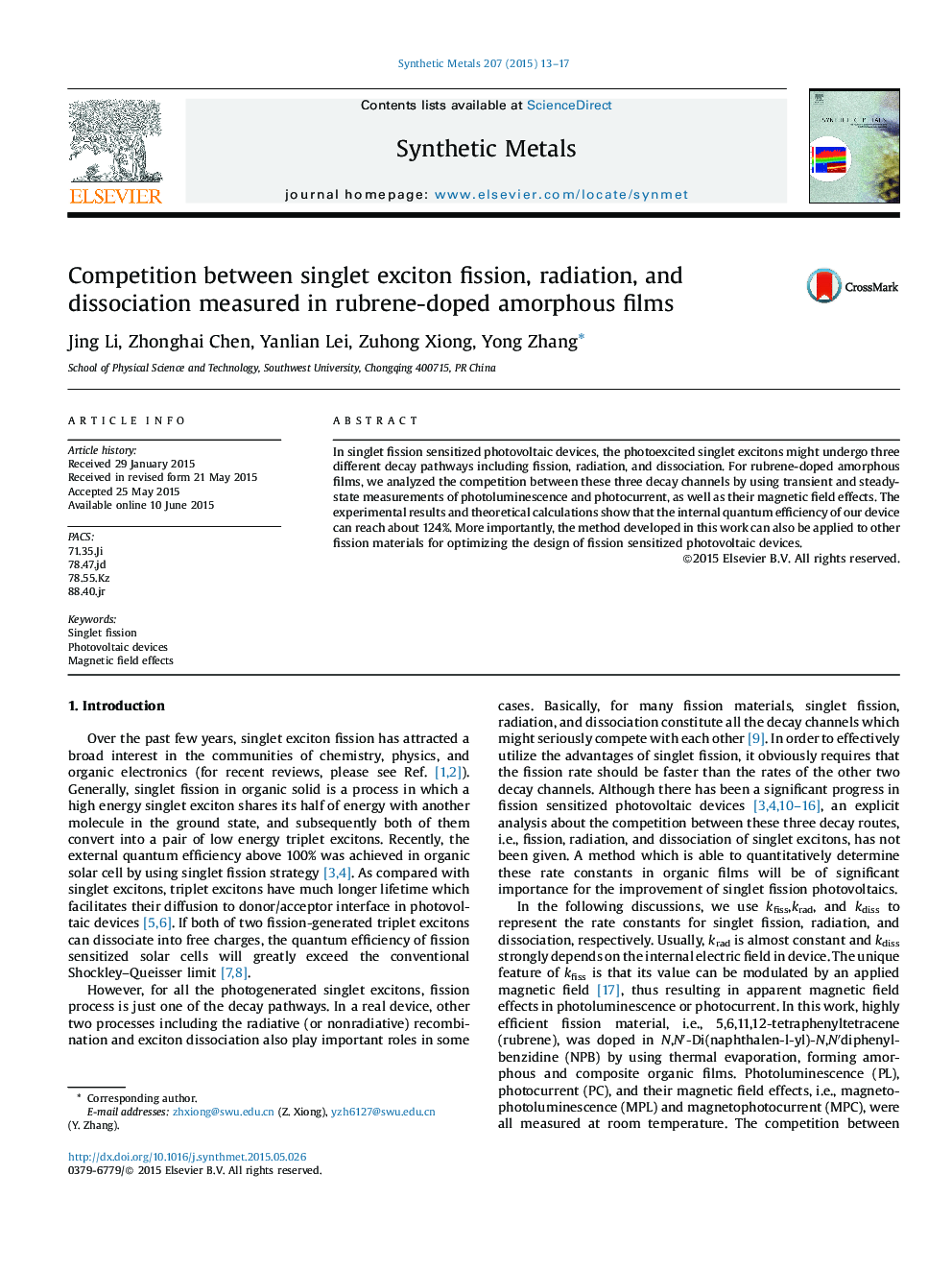| Article ID | Journal | Published Year | Pages | File Type |
|---|---|---|---|---|
| 1440442 | Synthetic Metals | 2015 | 5 Pages |
•In fission-sensitized photovoltaic devices, singlet excitons might undergo three decay pathways.•The competition between singlet fission, radiation, and dissociation was analyzed in detail.•In a rubrene-based photovoltaic device, the internal quantum efficiency can reach about 124%.
In singlet fission sensitized photovoltaic devices, the photoexcited singlet excitons might undergo three different decay pathways including fission, radiation, and dissociation. For rubrene-doped amorphous films, we analyzed the competition between these three decay channels by using transient and steady-state measurements of photoluminescence and photocurrent, as well as their magnetic field effects. The experimental results and theoretical calculations show that the internal quantum efficiency of our device can reach about 124%. More importantly, the method developed in this work can also be applied to other fission materials for optimizing the design of fission sensitized photovoltaic devices.
Graphical abstractFigure optionsDownload full-size imageDownload as PowerPoint slide
